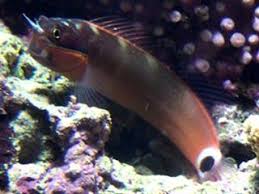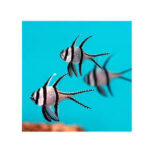
The dragon, an iconic symbol in Chinese culture, has long been revered for its power, wisdom, and auspicious attributes. As one of the most prominent mythical creatures in Chinese art, the dragon plays an essential role in various forms of artistic expression, particularly in Chinese sculpture. Its representation in sculpture transcends aesthetic appeal, carrying profound cultural, spiritual, and philosophical meanings. The dragon is not just a mythical beast in these works of art but embodies the core values and beliefs of Chinese society, including strength, protection, and the natural order. This article will explore the presence and significance of dragons in Chinese sculpture, examining their role in different periods, sculptural techniques, and symbolic meanings across various forms.
1. The Dragon in Traditional Chinese Sculpture
In traditional Chinese sculpture, dragons have been a prominent motif, featured in a wide range of artifacts, from temple carvings to imperial palaces and even tombstones. Chinese dragons are often depicted as serpentine creatures with long, winding bodies and antler-like horns, and their designs are highly symbolic. The dragon is typically shown in dynamic poses—twisting, flying, or coiling—representing its immense power and ability to transcend the boundaries between heaven and earth.
1.1 The Role of Dragons in Temple Architecture
Temples and religious sites in China are renowned for their sculptural embellishments, and the dragon plays a significant role in the decoration of these sacred places. In Buddhist temples, Taoist shrines, and Confucian temples, the dragon is often carved into pillars, gates, and altars. It is seen as a guardian figure, providing protection against evil spirits and negative energies. In many instances, dragons are depicted alongside phoenixes, lions, and other auspicious creatures to create an aura of spiritual protection.
In Taoist temples, the dragon is frequently featured in the form of intricate wood carvings or stone sculptures. The intertwining of dragons with cloud patterns or waves is a common motif, symbolizing the dragon’s control over the natural elements, especially water. As a water deity, the dragon’s presence in these temples invokes blessings for rain, prosperity, and fertility.
1.2 The Imperial Dragon in the Forbidden City
One of the most well-known representations of the Chinese dragon can be found in the Forbidden City in Beijing, the imperial palace of the Ming and Qing dynasties. Dragons played a pivotal role in imperial iconography and were incorporated into various architectural elements, including furniture, gates, and ceremonial robes worn by the emperor.
Sculptures of dragons in the Forbidden City were often associated with the Emperor of China, who was considered the “Son of Heaven” and was believed to be a direct descendant of the dragon. The emperor’s throne room, in particular, features dragon motifs prominently, with dragons etched into the throne, the ceremonial screens, and stone carvings adorning the walls. These dragons were meant to symbolize the emperor’s power and divine right to rule.
The nine-dragon wall in the Forbidden City, a famous piece of dragon-themed sculpture, is a stunning example of the cultural significance of dragons. The wall is covered with nine vibrant ceramic dragons, each representing a different aspect of the emperor’s authority. This wall is not only a visual masterpiece but also a symbolic manifestation of the emperor’s connection to the heavens, reinforcing his sacred role in the Chinese cosmological system.
2. The Dragon in Tomb Sculpture
In ancient China, dragons were often used in tomb sculpture to symbolize protection for the deceased in the afterlife. The dragon was considered a potent force, capable of safeguarding the soul and ensuring that it would continue its journey into the spiritual realm.
2.1 The Dragon in Funerary Art
The presence of dragons in tomb sculpture often signified a connection between the deceased and the divine. Carved into the tombstones or positioned as guardians at the entrances of tombs, these dragons were intended to protect the deceased from malevolent spirits. The dragon, being a heavenly being, ensured that the person’s spirit would be protected and able to pass into the next world without hindrance.
In some tombs, especially those of the wealthy and imperial families, large-scale stone dragons have been found guarding the entrances, placed beside the deceased in a symbolic act of protection. These sculptures often feature elaborate detailing, with the dragon wrapping around the body of the tomb or guarding the entrance. In certain cases, the dragon is paired with other mystical creatures such as phoenixes or tortoises, further amplifying the protection and the power attributed to the deceased.
2.2 The Dragon in the Ming and Qing Tombs
The Ming and Qing tombs, especially those of emperors and high-ranking officials, often feature intricate stone carvings of dragons, either alone or surrounded by other symbolic creatures. These dragons are typically depicted in relief, their coiling forms curling around ornate elements such as columns, archways, or tomb markers.
One example of such a representation is the Ming Tombs near Beijing, where dragons are carved into the tombstones and burial monuments of the emperors. The dragons symbolize the spiritual connection between the emperor and the heavens, ensuring that the ruler would continue to receive blessings and protection in the afterlife.
3. The Dragon in Chinese Wood Carvings and Furniture
The use of the dragon in wood carvings is another form of Chinese sculpture, often employed in the creation of furniture and household objects. Dragon motifs are frequently found on wooden furniture, particularly those used in royal palaces and wealthy homes. These carvings are not merely ornamental; they serve a spiritual purpose by invoking the dragon’s auspicious qualities to protect the household and ensure prosperity.
3.1 Dragon Motifs in Carved Screens and Cabinets
In Chinese furniture, especially during the Ming and Qing dynasties, intricate carvings of dragons could be found on screens, chests, cabinets, and chairs. These carvings often feature dragons chasing pearls, representing the quest for wisdom and power. The pearl of wisdom that the dragon chases symbolizes enlightenment and the ultimate attainment of knowledge. For imperial families, these dragons were representations of power, authority, and protection.
These carvings were more than mere decorative features—they were believed to bring good fortune to the home, ensuring the family’s prosperity and well-being. The dragon’s connection to the emperor and the heavens imbued the furniture with spiritual significance.
3.2 The Influence of the Dragon in Carved Jewelry
The dragon also appears in jewelry and personal ornaments, often carved into jade or ivory. These jewelry pieces, such as pendants, brooches, and bracelets, were worn as symbols of status, power, and good fortune. The dragon, often depicted in fine relief, would be placed on these objects to bring strength, vitality, and protection to the wearer.
In jade carvings, the dragon often appears coiled around the jade stone, symbolizing strength and eternity. Jade was considered an auspicious material, believed to have protective properties, and the dragon was thought to enhance its power.
4. Dragon Sculptures in Modern and Contemporary Chinese Art
While the dragon has long been a prominent figure in traditional Chinese sculpture, its role in modern and contemporary art continues to evolve. The dragon is still an important symbol in Chinese art and culture today, but it is often reinterpreted in new and innovative ways.
4.1 The Dragon in Contemporary Sculptures
Contemporary Chinese artists often incorporate dragon motifs into modern sculptures, blending traditional symbolism with innovative artistic techniques. These dragon sculptures may not always adhere to the traditional forms seen in ancient art, but they still convey the dragon’s significance as a symbol of power, prosperity, and spiritual connection.
In modern Chinese cities, large-scale sculptures of dragons can be found in public spaces and parks, serving as symbols of cultural pride and national identity. These sculptures, often monumental in size, are designed to reflect the continuity of the dragon as a cultural and spiritual icon, connecting past and present in the cultural narrative of China.
4.2 The Dragon in Contemporary Chinese Architecture
In addition to sculptures, the dragon motif continues to play an important role in contemporary Chinese architecture. Dragon imagery can be found in modern buildings, especially in cultural centers, hotels, and commercial buildings that seek to connect with Chinese heritage. The dragon remains a symbol of strength, protection, and vitality, ensuring that the building remains a safe and auspicious place for its inhabitants and visitors.
5. Conclusion
The dragon has long been a central figure in Chinese sculpture, serving not only as a powerful symbol of imperial authority but also as a protector, guardian, and bringer of prosperity. From ancient tombs and temples to modern art and architecture, the dragon’s image has been intricately woven into the fabric of Chinese cultural and artistic traditions. As a symbol that transcends time and space, the dragon in Chinese sculpture continues to captivate the imagination, embodying both the spiritual and the practical aspects of life in China. Through these various forms of sculpture, the dragon remains a living symbol of Chinese cultural identity, connecting the past with the present and continuing to inspire future generations.









